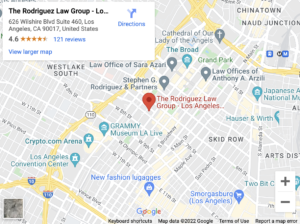Burbank Jail

Cities, counties, and the state of California operate independent incarceration facilities. The City of Burbank runs the Burbank City Jail, known locally as the Burbank Jail, to hold inmates arrested by the Burbank Police Department (BPD).
Most arrestees in the Burbank Jail temporarily stay until they make bail, get released on recognizance, or get transferred to the Los Angeles County Sheriff’s Department. A few inmates in the Burbank Jail choose to serve their sentence there under the pay-to-stay program.
Contents
Facts About the Burbank City Jail

The Burbank Jail is inside the Police and Fire Headquarters for the City of Burbank at 200 N. 3rd St. This building sits on 3rd St. between Palm Ave. and Orange Grove Ave. The entrance to the jail’s public parking lot is on Palm Ave. between 3rd St. and Glenoaks Blvd.
This facility only holds about 70 inmates. According to a recent arrest log, the BPD made about 300 arrests in one month. The jail typically avoids overcrowding since it only holds arrestees for 96 hours, excluding weekends and holidays.
While in the Burbank Jail, inmates only receive one visit lasting 15 minutes before arraignment. These visits occur in person at the jail facility rather than online. After arraignment, inmates usually get released or transferred to another facility.
The Burbank Jail is not part of the Los Angeles County jail system. It is also not part of the prison system run by the California Department of Corrections and Rehabilitation. However, an inmate who starts in the Burbank Jail after their arrest could end up in a Los Angeles County jail or California state prison to serve their sentence.
Who Gets Held in the Burbank Jail?
The Burbank Jail holds two types of inmates.
People Arrested By the BPD
Officers from the patrol division respond when the BPD receives a call for service. If the caller reports a crime, the officers will conduct an initial investigation. In many cases, the initial investigation will be the only one conducted because the officers have all the evidence they need to make an arrest.
Other cases, such as white-collar crimes, require additional investigation. Detectives from the investigation division will follow up the initial investigation by interviewing witnesses and gathering records.
If the investigation points to a criminal law violation, the police will arrest the person legally responsible. The police will inform the arrestee of the reason for their arrest and read them their rights. They will book them into the Burbank Jail at the police headquarters and search them to prevent contraband from entering the jail.
The first court hearing in an arrestee’s criminal case is called arraignment. The judge informs the arrestee of the charges against them. The defendant enters a plea of guilty or not guilty.
The judge will usually conduct a bail hearing immediately after arraignment. The judge has the following options at the hearing:
- Release on recognizance without requiring bail
- Set a bail amount
- Hold the defendant without bail
California law favors release on recognizance or bail over holding defendants in custody until trial. As a result, many arrestees will walk out of the Burbank Jail after their bail hearing.
The BPD transfers those held without bail and those who cannot pay to the Los Angeles County Sheriff’s Department (LASD). The county jail system incarcerates:
- Defendants convicted and sentenced to jail rather than prison
- Arrestees held pending trial
The LASD runs six jail facilities, two of which are currently closed.
Inmates in the Pay-To-Stay Program
A conviction happens when a judge or jury finds a defendant guilty after a trial. It can also happen when a defendant pleads guilty to charges in a plea bargain. This criminal defense strategy can help a defendant avoid the risk of more serious punishment.
In a plea deal, the prosecution can:
- Dismiss some charges, reducing the number of charges against the defendant
- Reduce the severity of the charges, lowering the potential sentence the defendant faces
- Recommend a shorter jail sentence or even probation
- Support a request for the pay-to-stay program
The pay-to-stay program allows people convicted of non-violent misdemeanors to serve their time in the Burbank Jail instead of the Los Angeles County Jail system.
LA County runs the largest jail system in the U.S., with over 17,000 inmates as of the 2019 jail census. A recent report found the LA County jails overcrowded and dangerous. In 2023, the jail population in the county fluctuated between 2% and 16% over capacity. More importantly, 31 inmates died in the county jails during the first eight months of 2023.
The pay-to-stay program allows inmates to serve their time in the Burbank Jail instead of the LA County jails. The BPD promises that the Burbank Jail is relatively new and clean. It’s also safer than the county jails, with no reported deaths in 2023.
Another benefit of the pay-to-stay program is that the BPD may agree to a schedule in which you only report to jail on certain days. For example, you might only need to serve your time in jail on weekends or certain weekdays.
Eligibility For the Pay-To-Stay Program
Only inmates with misdemeanor convictions for non-violent offenses can enter the pay-to-stay program. The sentencing judge must approve your request to enter the program. You must pay $100 per day during your incarceration, hence “pay” to stay. You must also get a tuberculosis test and have medical insurance to participate.
The jail will provide a list of what you must bring when you report to jail. You must also bring a deposit of $100. The jail will apply this deposit to the fee for the last day of your stay. You will also be responsible for the rest of the fee. But unlike many other city jails, Burbank Jail does not require prepayment for your entire stay.
Getting Out of the Burbank Jail
Since the Burbank Jail only holds arrestees temporarily, you will probably need to call the BPD to find out whether the jail holds your loved one. Things can move quickly after an arrest, and an arrestee can get arraigned and released or transferred before you find them.
If your loved one is in the Burbank Jail, you might not need to wait to get them out. Occasionally, a California criminal defense lawyer can persuade the police to release an arrestee without charges. An attorney can also persuade the prosecutors to dismiss charges before or at the arraignment.
Contact The Rodriguez Law Group to discuss your loved one’s charges and how we can help you secure their release from the Burbank Jail.


